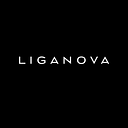Post-Corona Consumerism: Society & Retail in Transition
How customers will tick in the future and which measures are important now to remain relevant.
The whole world is currently facing a big question: What reality will we inhabit in future? In times of uncertainty, one thing is absolutely certain for international trade: the sooner retailers familiarize themselves with the changing needs and behaviors of consumers, the greater their lead in the post-corona world will be. After all, companies will only be able to survive if they know exactly what makes the post-corona customer tick.
In a new white paper, entitled “The Consumer Post Corona”, strategy experts from our consulting company LIGA2037 tackle the question comprehensively by developing potential, contrasting scenarios that outline how we will live, shop, work and travel together in the future. Furthermore, the white paper includes a canvas to support ideation and help companies and brands develop their own individual future scenarios.
Here are some take-aways briefly summarized.
Social — Cosmopolitan Communities vs. Social Cocooning
In scenario one, social withdrawal leads to spatial isolation. Society is now catching up on quality time, which had to be dispensed with for a long time during the crisis. After physical distancing, time with friends, shared experiences and direct exchange have top priority. Communities, even across borders, are more important than ever, and the value of digital services is measured by their entertainment and socializing performance. In the contrasting scenario two, isolation has led to a rethinking of how we deal with each other: We meet in micro-tribes — small closed groups of friends and family. In this way, the society lives a much more intensive cohesion and develops into a more conscious community. Social media is now only used for gatherings, and our immediate environment and home is the new safe space.
Consumption — Hedonism vs. Minimalism
Scenario one describes hedonism as the highest maxim for the fulfilment of an individual’s needs. The reduced lifestyle of the last few weeks is replaced by the exact opposite as the new norm after the crisis: We shop again (revenge buying), visit restaurants and bars and finally experience entertainment as we knew it before the pandemic broke out — in an even more intense way. The more consumption, enjoyment, entertainment and experiences, the better and more self-actualized we feel. Same-day-delivery and inspiring shopping experiences are indispensable. In contrast to this, the new decelerated mindset stands in the second scenario: every new purchase is rationally questioned, possessions are reduced, and people prefer to repair things themselves. Consumption is reassessed from the point of view of sustainability. The hashtag #supportyourlocals makes the leap into the new reality and we only shop online when things are not available in physical stores.
Work — Flexibility vs. Security
The personal relationship people have with their job has often been put to the test in recent weeks. Scenario one describes an employee who does not see security, loyalty and a linear career as a top priority. What counts now are flexible working models, work-life balance, remote work, part-time or tandem jobs and further training opportunities, because life is too short for routine and standstill at work. Coworking spaces are the new hangout spot. In contrast, scenario two describes the employee who develops a new appreciation for their job, because job security is now the top priority. Traditional jobs are also experiencing a comeback in this context, and the meaningfulness of the tasks is more important than the salary. Proximity to the workplace is a top priority, and working from home is the new standard.
Travel — Global vs. Local
The travel ban has recently meant people have been stuck at home for weeks. In the first scenario, this leads people making up for canceled trips and curiosity about foreign countries increases. We book long-distance travel and share our experiences with the social media community. Package holidays are yesterday: today, surprise and individuality count. The character of the experience defines its success. In scenario two, many people have learned to appreciate the charm of their surroundings anew and now take time out more often in their own homes and regions. The traveller thinks more sustainably and only goes on holiday if the destination can be reached by train or bicycle. Garden plots become more popular and we use free time to get involved in local projects.
New Pathways, Vast Potential: And this is how it works
The change in social behavior has a major impact on future shopping behavior and the customer expectations of brands. The most important thing is to get involved in both scenarios in order to create a unique and individual picture of the future. Retailers must now act quickly and find answers to the following questions:
How will interaction with customers change? Which product range is relevant and which brand values do we want to credibly embody?
At present, quick action is required. But companies must not risk lapsing into actionism and getting lost in reactive measures. Short-lived measures in the form of quick wins should be derived from long-term strategic and operational goals. For example:
A) Customer Proximity as a Future Booster
In order to optimize their strategy in a meaningful and successful way, companies must now communicate a coherent position, and approach customers with clear messages and concrete performance promises. Market analyses and customer surveys are indispensable to better understand customer expectations. Brand values are now also under scrutiny and must be sharpened and adapted accordingly. What customers now appreciate is honest and open brand communication: What has the company learned from the crisis and what appropriate measures are now planned?
B) Phygital Point of Sale
Operationally, there are also many opportunities to prepare for the period after the crisis. The role of the physical point of sale will change and must be fundamentally rethought. As people have been increasingly shopping online recently, the linking and merging of digital and physical touchpoints is becoming more important than ever. New, innovative service offerings could ensure a smooth customer journey in the future. Products will also play a major role in this context: customers will attach greater importance to where their products come from and — depending on the scenario — whether they have been produced sustainably.
Next Step: Future-proof your business
The “Strategy Scenario Canvas” developed for the white paper helps companies and brands develop an individual future scenario in order to derive the short and long-term effects of the new customer mindset and the strategic and operational action potential for both during and after the corona crisis. The canvas offers step-by-step guidance and is designed to help companies apply new customer behavior directly to their own business.
Get the full story: Click here for the white paper “The Consumer Post-Corona” and Scenario Canvas.
Find the German version of this article here.
To learn more about LIGANOVA
Follow us on Instagram and LinkedIn! And have a look at our website.

